Greenlanders have a term for where a ship docks known as umiarsuit qaavat. As the first major Greenlandic settlement along the future Transpolar Sea Route, Ittoqqortoormiit, or Itto, finds itself in the curious position of becoming a potentially viable novel port city.
This is due to its projected abundance of halibut and shrimp (a major Greenlandic export that’s currently found along the warmer southern coast) and influx of backpackers and tourists eager to hike the rugged mountains and catch a glimpse of its native animal species.
Acting as a mediator, this novel seaport reconciles the sharp descent from land to sea using an elastic form that evokes the undulating terrain and gentle waves. Celebrating Itto’s most important source of future income, fishing, the building wraps itself around a marina where local trawling boats come and go throughout the day. The materiality borrows from the local and global of seaport typologies: wooden planks that comprise many small fishing marinas and concrete which is employed in commercial loading docks, as well as glazing that allows for sweeping views of the sea.
Other novel aspects of the seaport include a fresh fish market and green roof with plant species that can be found in other parts of Greenland--evergreens, berries, and mosses-- once unable to grow in Itto due to its volcanic rock and permafrost but made possible by a slowly warming climate. Inside the building, check in and ticketing counters for smaller cruise ships and ferries signal a future Itto that may one day plug itself into a larger shipping network.
Location
Ittoqqortoormiit, Greenland
Instructor
Amanda Aman
Semester
Fall 2020 [M. Arch]
Program
Industry, Mixed Use, Publicspace
Type
Individual Project
Size
60000 ft² / 5570 m²
Related


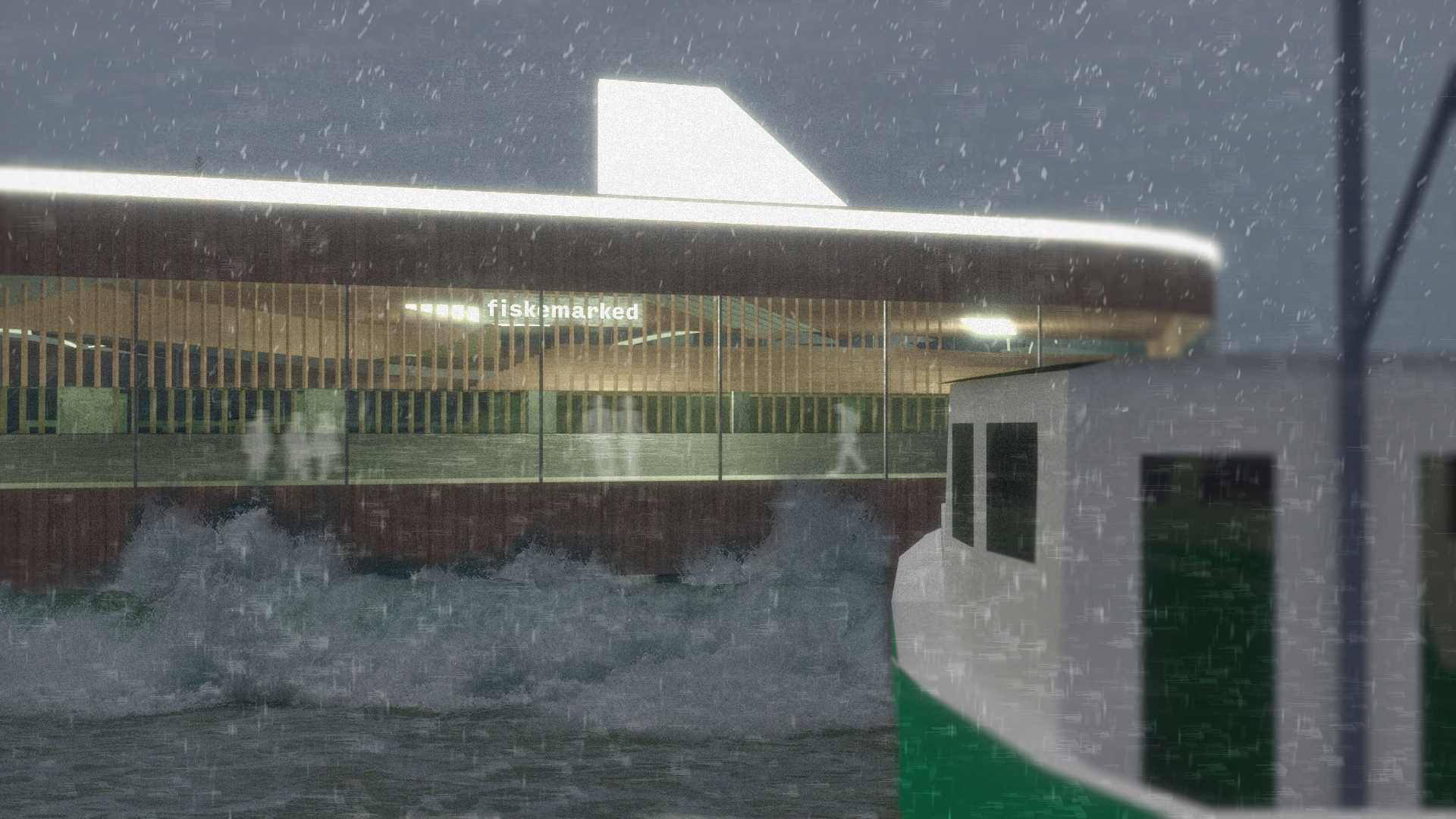
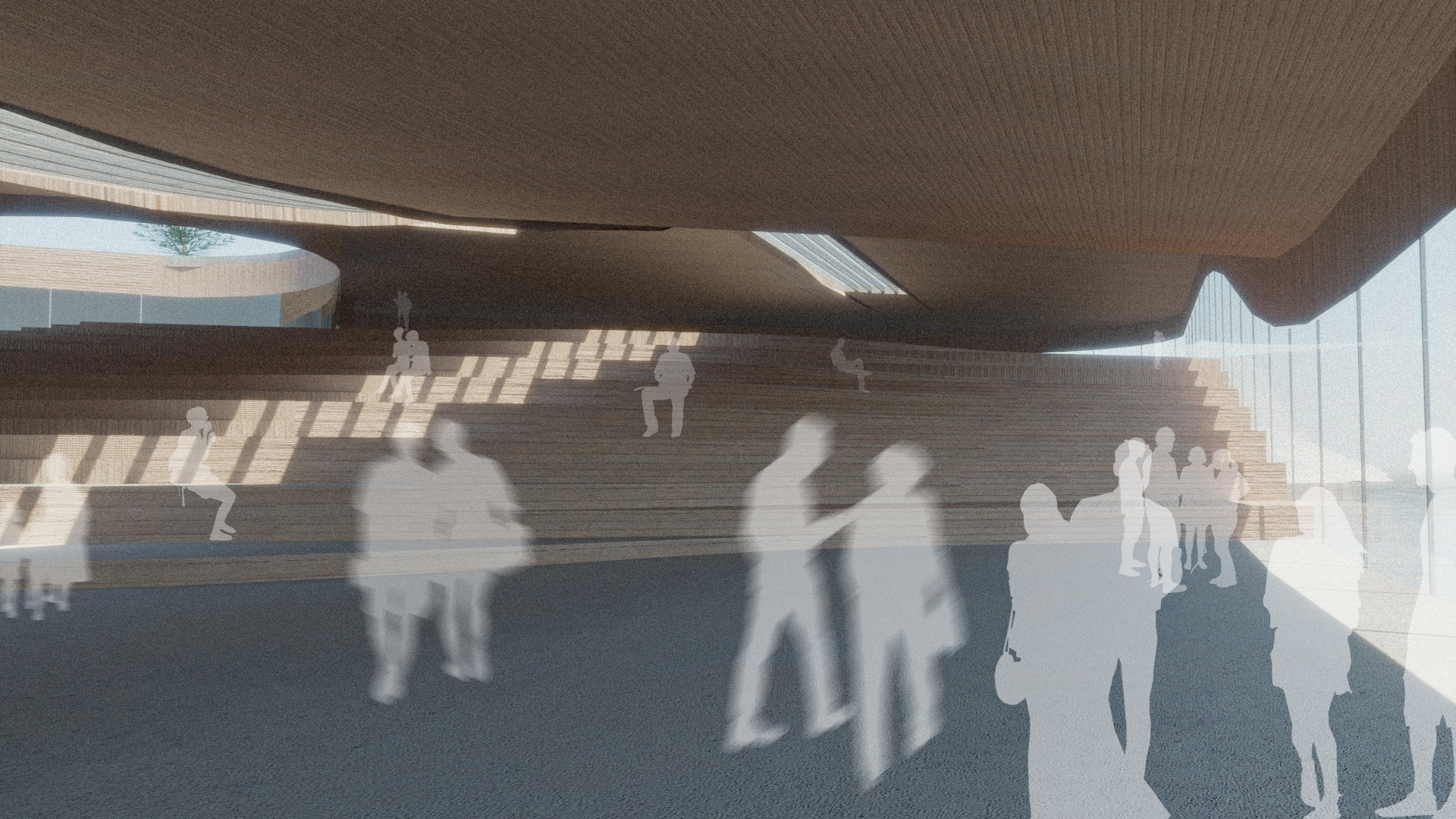

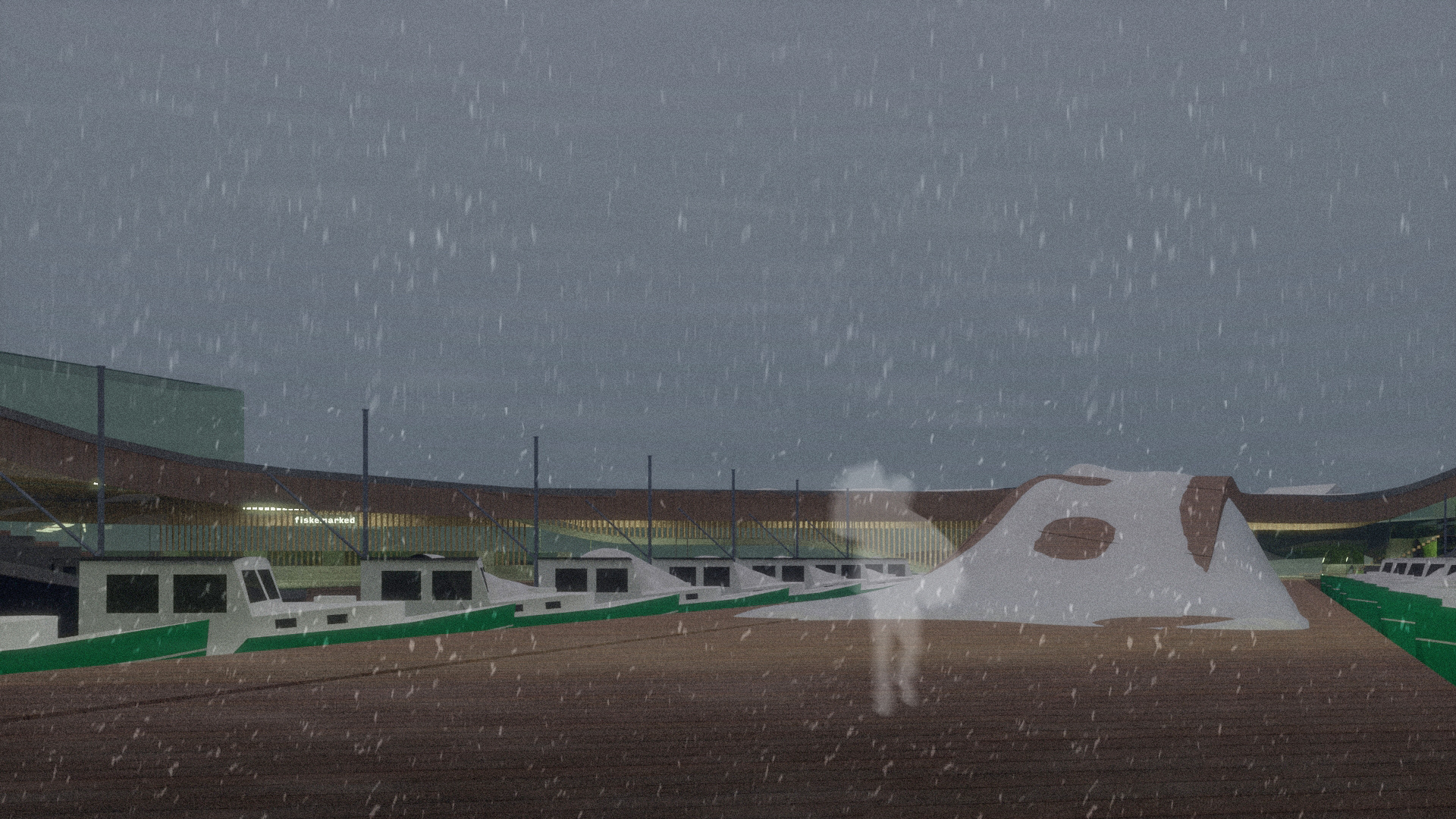
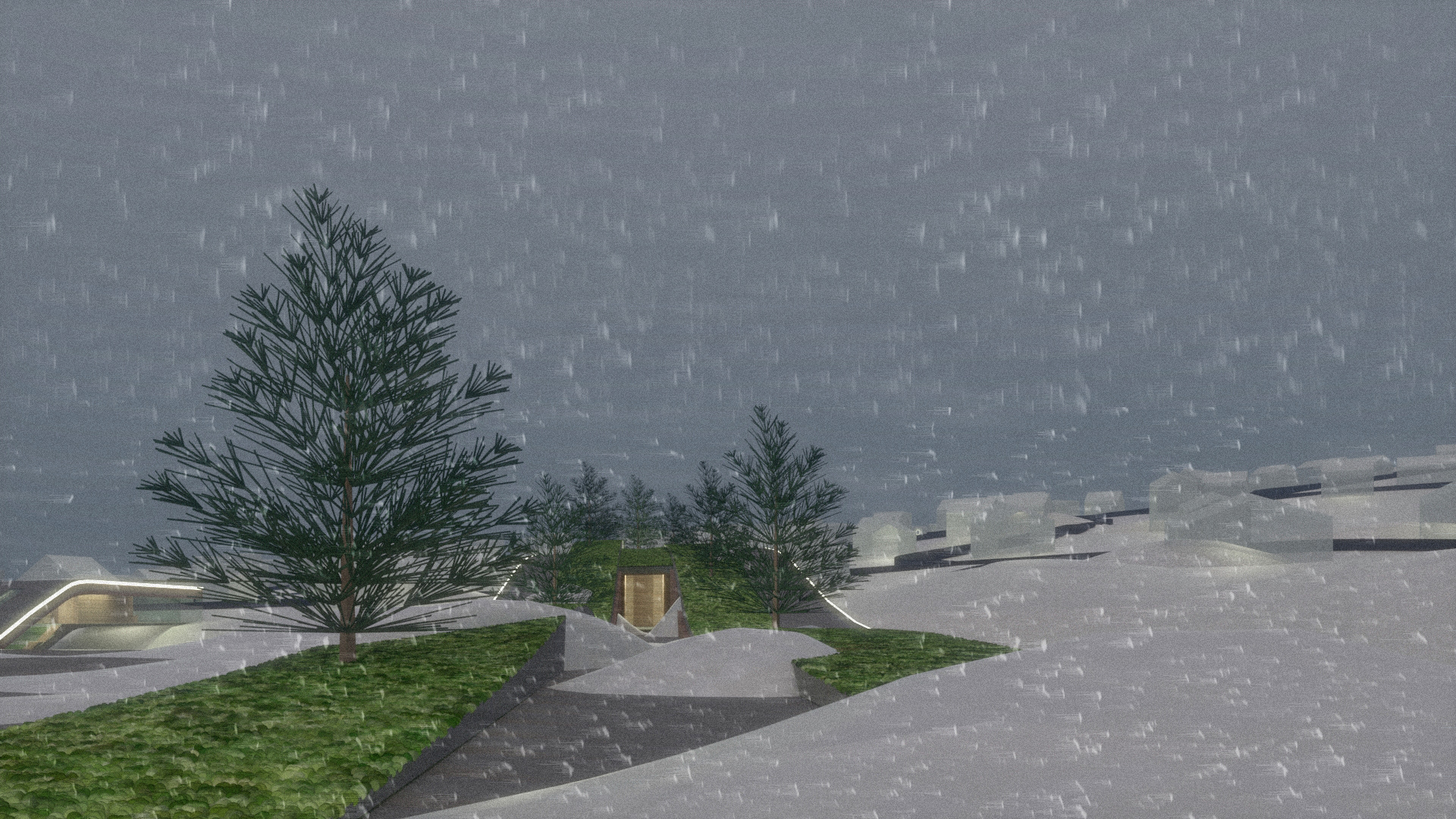
diagrams


drawings

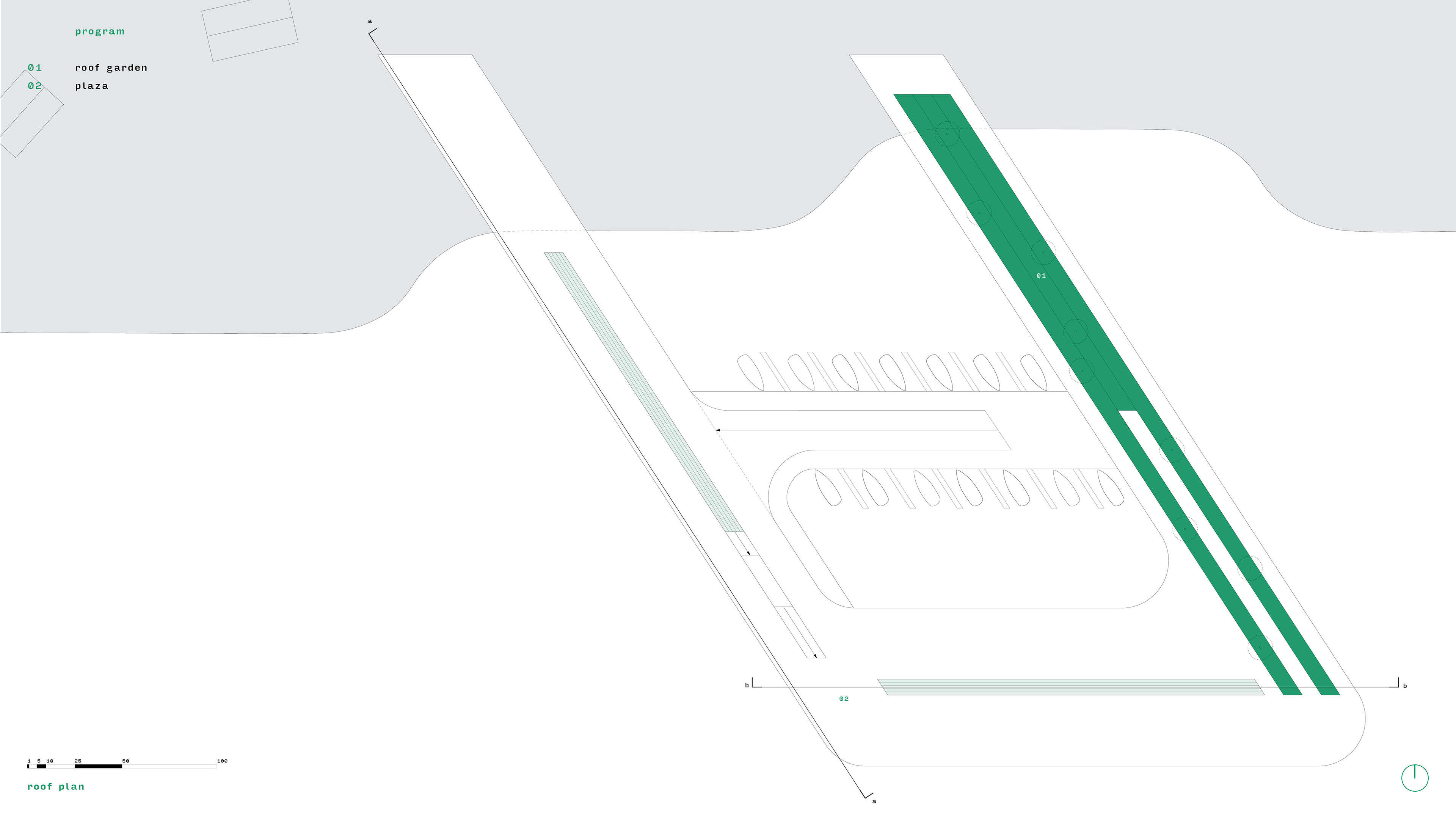
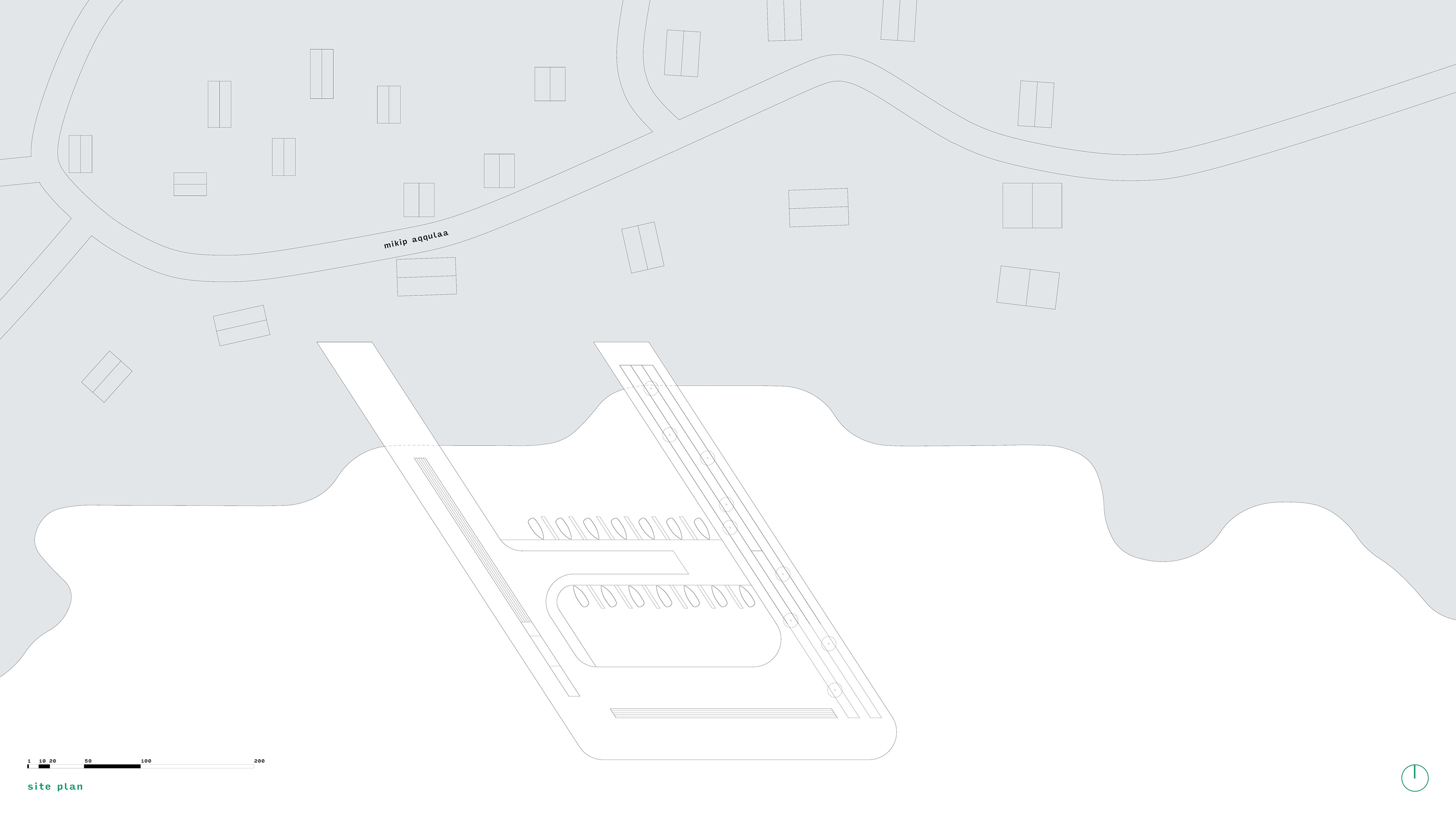
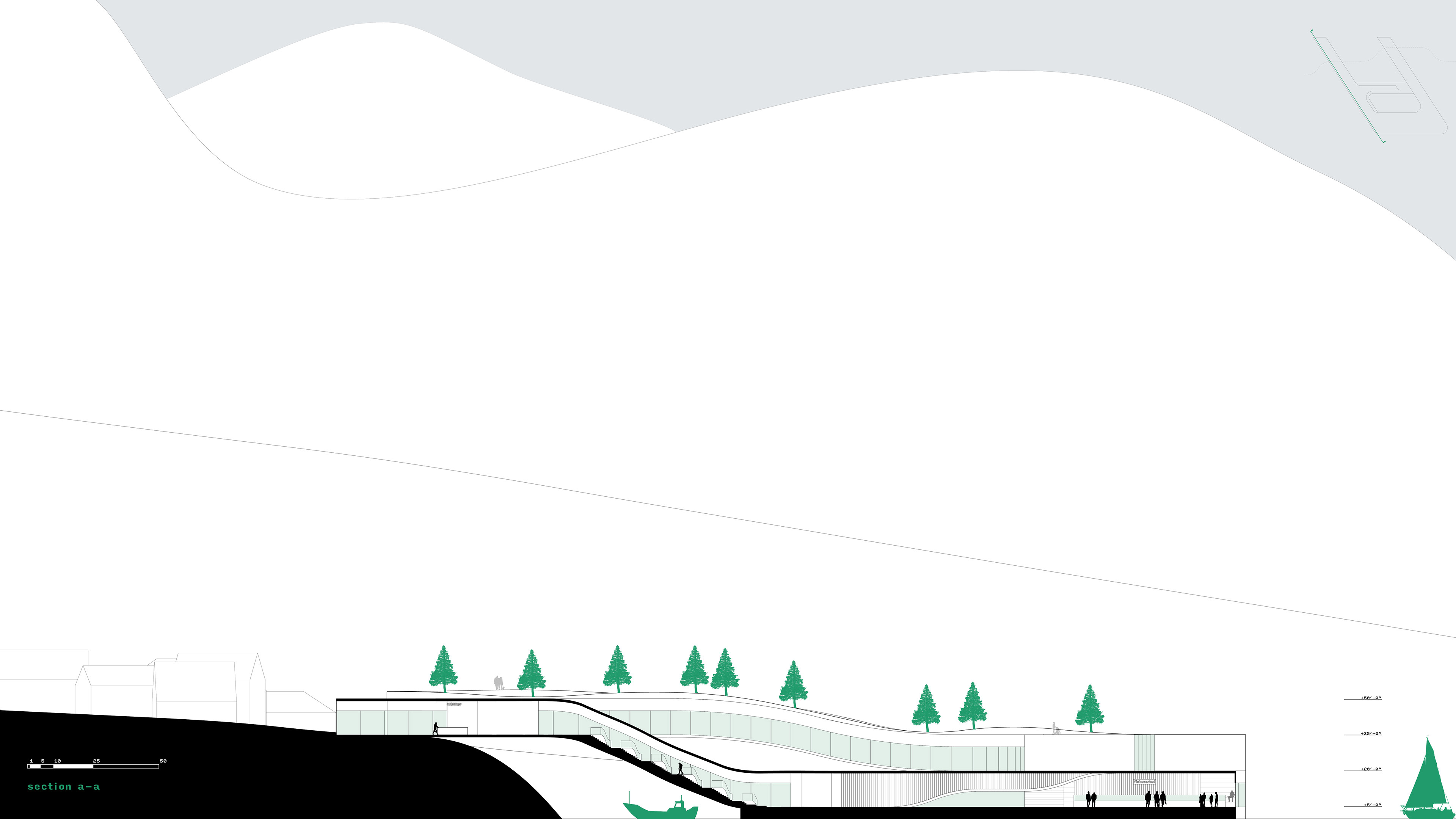
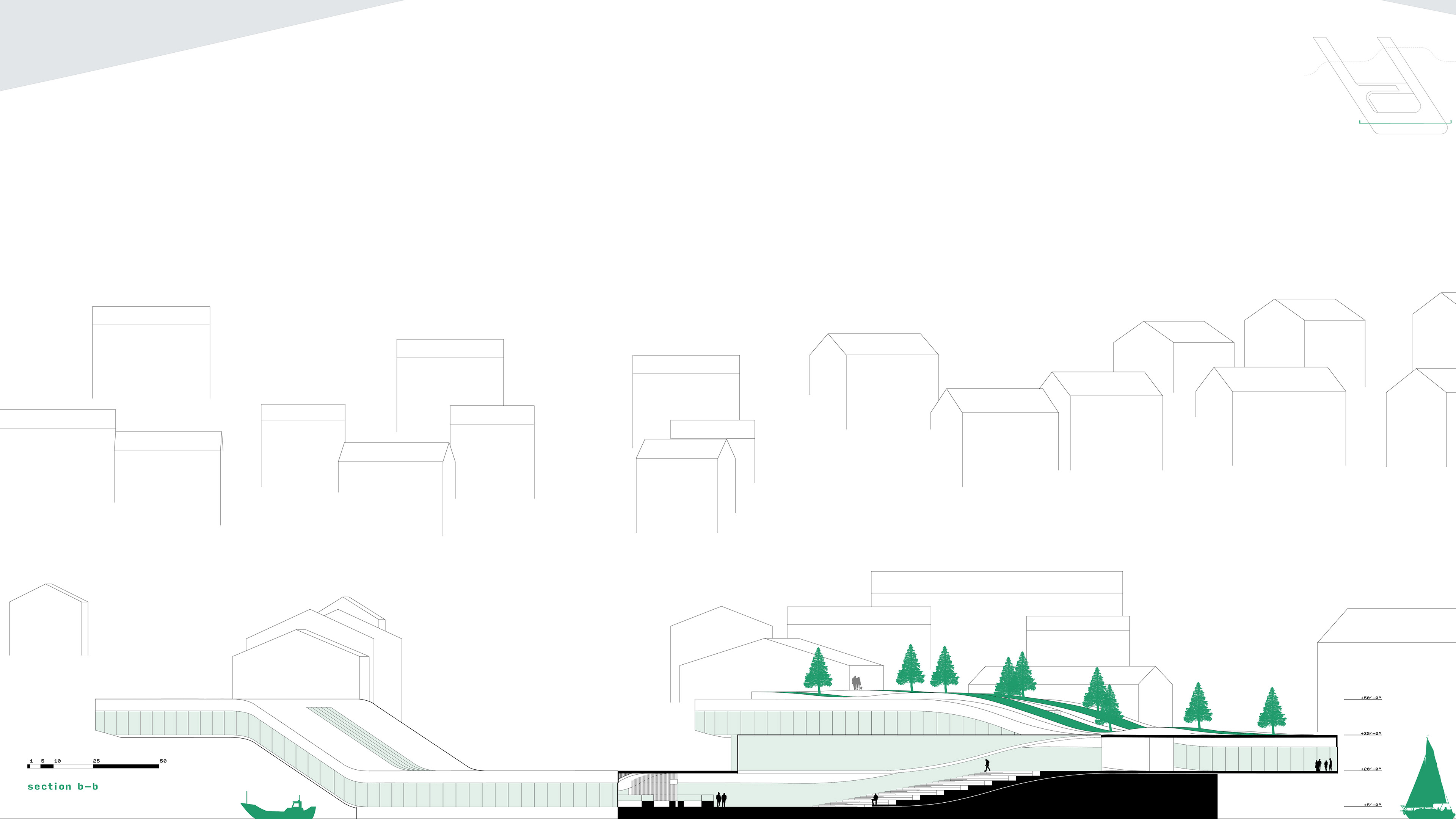
models


media